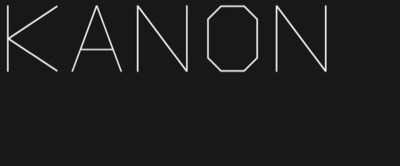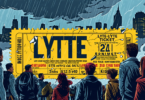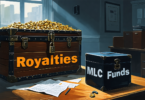PRESS RELEASE PR Newswire Aug. 10, 2021, 10:00 AM
MUNICH, Aug. 10, 2021 /PRNewswire/ — Art for the next 100 years: The second chapter
While still unveiling the artworks in the K21 Collection, Kanon is pleased to announce another milestone in the collective’s quest to explore the potential of NFTs as an artistic medium and to establish enduring practices and products for this uncharted territory.
Mashene Music Group – Join Us | Corporate Royalty Sharing | Social @ LinkTree
KSPEC is the first-ever open source, permissionless on-chain protocol that gives artists the freedom to fulfill their most ambitious creative visions in the NFT space, offers collectors unrivaled NFT provenance and robustness, and provides NFTs the adaptability and updatability needed to persist over time. Or—as Kanon describes it in reference to an iconic gaming move—KSPEC unlocks God Mode for NFTs.
“As a software startup founder, digital asset investor, and avid NFT collector myself, I was truly astonished to see how brittle and creatively limiting NFTs are when looking closer—despite their massive success,” Kanon core contributor and KSPEC designer, @fastackl says.
“At Kanon, we strongly believe that NFTs have a bright future, but only if those shortcomings can be resolved. KSPEC is our answer. It is the product of input from best-in-class museum conservators, curators, art lawyers, and technology experts to craft a design that marries the highest conservation standards with cryptonative elegance, transparency, and immutability.”
The limitations of NFTs
Despite the exponential growth of NFTs in recent months, not much has changed in terms of technical capabilities since the medium’s inception. Although NFTs seem to have solved problems of provenance and ownership, they do so only to a certain degree. While digital art has experimented with ever-evolving technologies since the 1960s, NFTs have not caught up to allow for the same creative bandwidth.
Artistic vision and expression encounter a broad array of limitations—from reproducing video lengths or image resolutions to updating artworks post-minting and compiling more complex assemblies of multipart or multiauthored artworks. More complex NFTs are literally at risk of “breaking” the moment file formats change or new metaverse platforms supersede old ones, thus replicating the woes digital art conservators have been tackling for over three decades.
The very immutability of the smart contract that tracks provenance and ownership does not allow NFTs to survive long-term by updating the file(s) to the latest format. Introducing flexibility without compromising undisputed ownership is one of the hard problems KSPEC solves.
Challenges of a smart contract–focused approach
Though awareness of those problems is widespread, solutions have (for now) proven impossible or come with a set of major drawbacks. Most attempts operate on the smart contract level, introducing data redundancy by parallel hosting, having to save metadata on-chain at the time of minting, or relying on substitute mechanisms like a “seal” mode, as in the approach of World Wide Web inventor Sir Tim Berners-Lee. For every new NFT, artists, collectors, and platforms face difficult decisions whether or not to adopt new sets of smart contracts and the potential errors and exploits such untested code may introduce.
Parallel NFT state
Instead of trying to squeeze information into smart contracts, KSPEC enables the artwork itself to live on-chain in a “Parallel State” that is inextricably linked to the NFT and where any number of files of unlimited size and metadata can be saved.
This KSPEC Parallel State is constructed using a carefully crafted data package, which is saved onto the Ethereum blockchain via the _data field inside the ERC-721 / ERC-1155 standard safeTransferFrom function in a self-transfer transaction from the minting artist to themselves, allowing the artist to officially declare anything from copyright restrictions and high-resolution files to installation instructions when they are the owner of their artwork—in other words, a two-party contract between the artist and themselves that is subsequently transferred to future collectors.
This self-transfer can be repeated at any time in the future to update the KSPEC of an NFT, or even applied retroactively on a previously sold NFT in collaboration with the current holder. Elegantly simple yet unbreakable, flexible, and extensible, KSPEC is compatible with all platforms and available to artists and collectors free and open source.
KSPEC-ID
Being able to secure complex, expansive sets of assets via KSPEC on-chain enables both humans and machines to easily retrieve all the rich data and metadata associated with the artwork. One of the most powerful features that KSPEC enables is KSPEC-ID, the first-ever unbreakable, on-chain permissionless identity-verification system. Independent of which platform an artist has minted on in the past or decides to use in the future, KSPEC-ID provides them the ability to verify on-chain, on demand, and at any time their identity, including pseudonymous accounts.
In a space where counterfeit work is endemic given the lack, heretofore, of a robust, programmatic ID verification system, KSPEC-ID alone is transformational.
KSPEC showcases: A number of firsts
KSPEC has already been implemented in a series of artworks, from both Kanon’s K21 Collection and the broader artistic community. For The Cosmic Number (2021), created by digital art pioneer Suzanne Treister for K21, KSPEC was used to secure an entire website on-chain in an NFT, also constituting the protocol’s first-ever use.
With Jenna Sutela’s video vanitas for K21, YAMSUSHIPICKLE (2021), KSPEC enabled the artist to attach a full-length, full-resolution video of almost 2 Gb, and for Claire (2021), by Anyma and Marigoldff, a full- length, full-resolution music video. Cao Fei’s legendary Second Life avatar, China Tracy, will come to life again in the K21 Collection with a multiple-attestation KSPEC-ID, the first for a pseudonymous artist.
More features and firsts. And God Mode for all
In addition to securing complex digital artworks like The Cosmic Number, Kanon is working on a variety of other “first-ever” features that KSPEC will enable. These include a KSPEC multi-signature, which will secure the identities of multiple co-creators of an NFT on-chain; the KSPEC physical fingerprint, which will provide unbreakable on-chain provenance for a physical artwork; and the KSPEC of an interoperable 3D NFT, with metaverse-ready assets secured on-chain that can be extended to keep up with new metaverse platforms and formats as they emerge.
“While the KSPEC protocol itself is already live, it does require some programming proficiency to implement at the moment. So we are collaborating with select artists and studios to handcraft KSPEC for works that are pushing the limits of NFTs—a sort of ‘white glove’ service,” continues @fastackl. “The ultimate vision, however, is to make KSPEC and the capabilities it unlocks available to all: to put God Mode in the hands of any artist with an ambitious idea and an internet connection.”
Please read more about KSPEC in this twitter thread from @fastackl and in Kanon’s Medium publication.
About Kanon
Kanon is a pseudonymous collective of institutional art, design, and cryptonative technology professionals dedicated to establishing enduring practices and protocols for the art of the next 100 years. Completely immersed in the NFT space, Kanon strives to pair equitable profit sharing for artists and their causes with integrations into decentralized finance. Thus, Kanon recasts modes of patronage, philanthropy, curation, and custodianship—ultimately promoting a new model of an institution.
In March 2021, Kanon launched the K21 Collection as its inaugural product, bringing together the first NFTs minted by established and emerging art world luminaries with iterations of trailblazing experiments in digital art.
Please read more about Kanon and its projects on k21.kanon.art, Medium, Twitter and Instagram.
For further information, please contact Anja Kaehny, Bureau A+, at media@kanon.art or anja.kaehny@bureau-a-plus.com; Phone: +49 151 61 60 41 54
SOURCE Kanon







